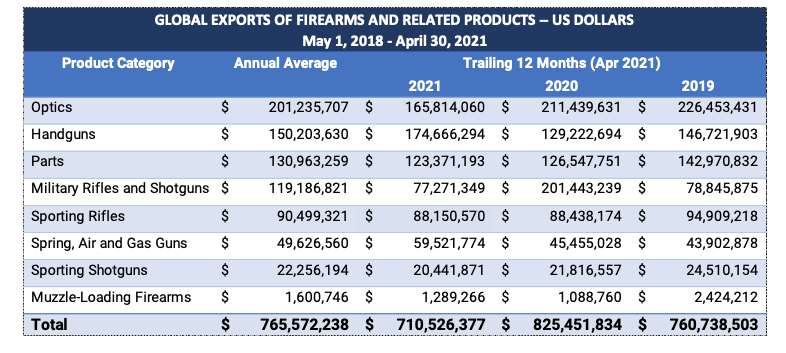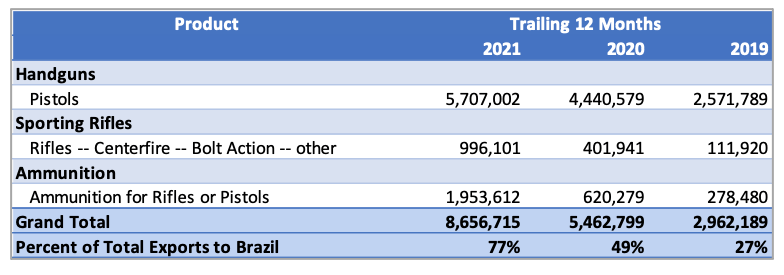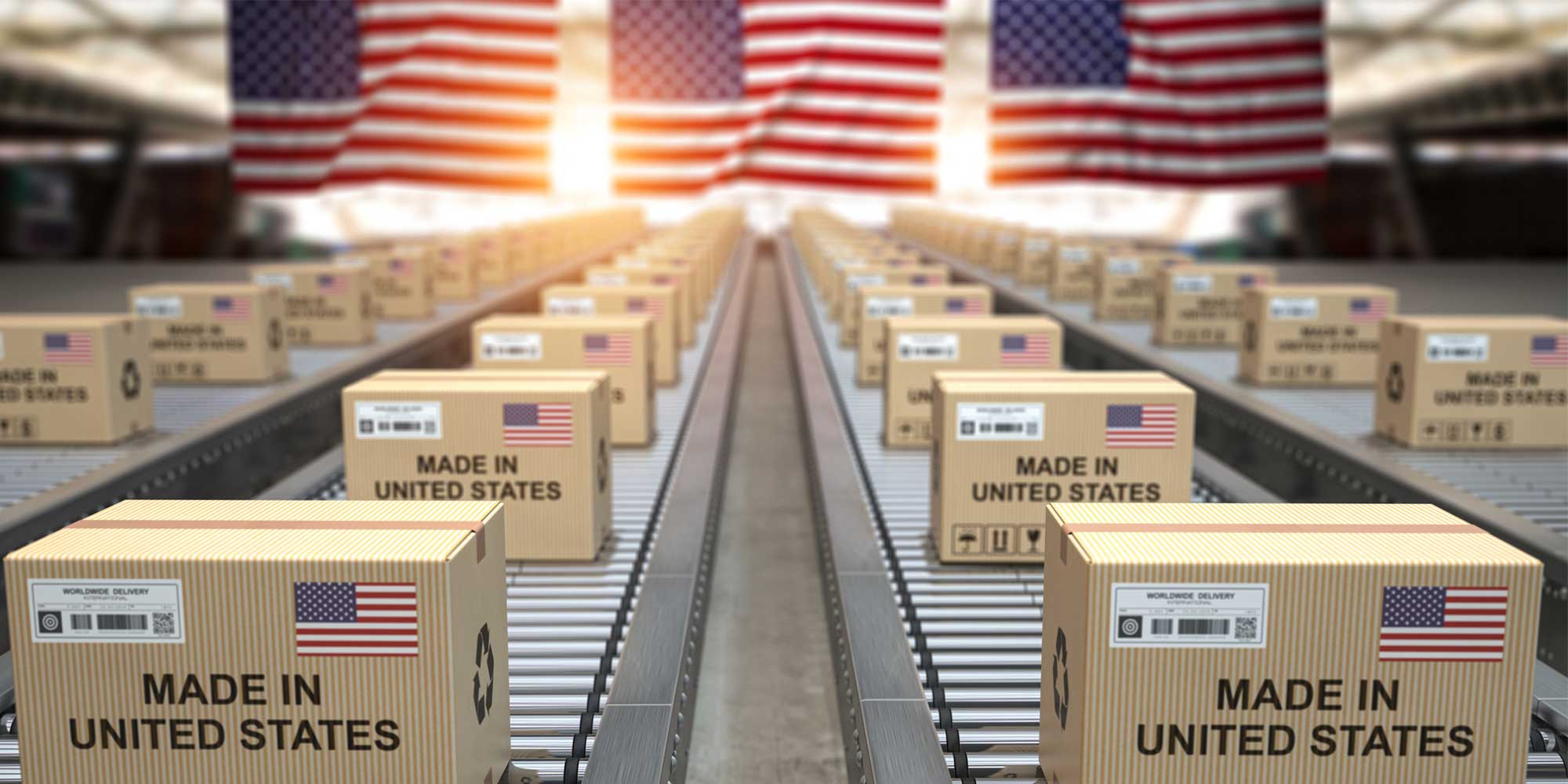After a Year, Census Bureau Data Suggests the New Export Regulations for Firearm Products Haven’t Increased Exports
No one promised that moving export control over non-military firearms and ammunition from the State Department to the Commerce Department would lead to increased exports.
A year into the new regime, the U.S. Government data we analyze suggests that, in fact, they haven’t.
But maybe there is a story that isn’t reflected in the published data. In this issue, which completes our first year of publishing EasyExport Insights, we will, for the first time, examine proprietary data from within the EasyExport system. We see signs that a different story is beginning to emerge.
Published Macro Data Shows No Signs of Growth
Table 1 is a condensed version of the first table we include in every issue of EasyExport Insights.

Table 1 presents a 36-month backward look at all 22 of the product categories we follow, condensed into eight groupings.
The only grouping in which exports have grown significantly in the last three years is Spring, Air and Gas Guns, products that were unaffected by the change in export jurisdiction in March 2020.
In every other grouping except handguns, exports have gone up and down. Or just down. Even in the handgun category, when compared to Table 1, Table 2 shows that almost all the increase in handgun exports since the new regulations took effect in 2020 can be ascribed to one-time purchases of pistols by the governmental end users in Thailand.

Published Data for Individual Countries Do Not Show Growth Either
Like the global data, data at the individual country level show no clear signs that the new U.S. export regulations have generated an increase in exports of U.S. firearm products. The only country where there appears to be a connection between the new regulations and increased exports is Brazil.
We first noticed a possible connection between the new regulations and increased exports to Brazil in our December 2020 EasyExport Insights. In that issue, which included full-year 2020 statistics, we observed evidence of regulatory-related growth in three product categories: pistols, bolt action rifles, and ammunition for rifles and pistols.
Table 3 shows a continuation of this growth through April 2021.

In the December issue, we noted that the Commerce Department had reported that Brazil was the leading destination country for firearm-related exports. We also observed that Brazil President Bolsonaro’s liberalization of his country’s firearms laws was a likely contributor to growth.
The combination of these factors led us to conclude that there was likely a causal correlation between the new U.S. export regulations and growth in exports to Brazil.
Four months later, it is hard to avoid the conclusion that the new U.S. regulations are a contributing factor to rising exports to Brazil. The growth in exports to Brazil is both real and significant in three important product categories.
During the year that preceded the change in U.S. export regulations, the three product categories shown in Table 3 accounted for just under $3 million in U.S. exports.
During the two years since the new U.S. export regulations took effect, the same three categories grew 292%, from $2.9 million to $8.66 million. That’s a $5.7 million increase. The three product categories in Table 3 accounted for a quarter of exports to Brazil in the year before the new regulations came into effect. Now they are three quarters.
In addition, Brazil has become the fifth largest export destination for U.S. pistols and the 12th largest destination for exports of bolt action rifles. (See pages 7 and 11 of the April 2021 EasyExport Insights.)
We’re willing to conclude that the growth we see in Table 3 would have been lower without the transition of export control jurisdiction over sporting firearms and ammunition from the State Department to the Commerce Department.
EasyExport Data Suggests a Correlation Between the New Regulations and Increased Exports
Our own proprietary data supports the conclusion that the new U.S. export regulations are contributing to an increase in U.S. exports.
EasyExport is an automated export processing service that began operating in July 2021, but, while waiting for our software engineers to complete their work, we began processing export transactions in March 2020 using a manual version of EasyExport.
During the 15-month period from late March 2020 through June 2021, we processed more than 1,500 export shipments, ranging in value from $4.99 to $50,000. This included slightly fewer than 100 licensable, mostly commercial, shipments, and more than 1,400 non-licensable shipments.
Licensable shipments went to 13 countries and non-licensable shipments were exported to 27 countries.
Although our sample size is small and not statistically significant, we see clear signs of an increase in small shipments ($500 or less) to countries other than Canada. This is an important category of shipments.
These shipments include products that are now classified as EAR99 or 0A501.y, as well as products that are now classified as 0A501.c, .d, or .x.
Prior to the change in export jurisdiction from the State Department to the Commerce Department, nearly all the shipments in this category with a value over $100 would have required an ITAR export license (DSP-5) from the State Department.
With the filing cost of the license being $250, it is highly unlikely that small shipments between $100 and $500 in value would have occurred.
Now they can occur. Under the new regulations, small shipments do not require a license unless the value exceeds $500, and, when a license is required, there is now no filing fee. Accordingly, we believe it is hard not to attribute growth in non-Canadian small shipments to the change in regulatory jurisdiction that occurred in March 2020.
We look at exports to countries other than Canada, by the way, because the non-licensable value limitation for Canada has not changed. It was $500 under the ITAR and remains $500 under the new regulations. Every other country has increased from $100 to $500.
Next month we will dive into some more observations derived from our own data.






